INTRODUCTION
Age is the major risk factor for cardiovascular disease. Heart disease and stroke incidence rises steeply after age 65, accounting for more than 40 percent of all deaths among people age 65 to 74 and almost 60 percent at age 85 and above. People age 65
and older are much more likely than younger people to suffer a heart attack, to have a stroke, or to develop coronary heart disease and high blood pressure leading to heart failure. Cardiovascular disease is also a major cause of disability, limiting the activity and eroding the quality of life of millions of older people each year. The cost of these diseases to the Nation is in the billions of dollars.
To understand why aging is so closely linked to cardiovascular disease, and ultimately to understand the causes and develop cures for this group of diseases, it is essential to understand what is happening in the heart and arteries during normal aging—aging in the absence of disease. This understanding has moved forward dramatically in the past 30 years. The purpose of this booklet is to tell the story of this progress, describe some of the most important findings, and give a sense of what may lie ahead.
While we know a great deal about cardiovascular disease and its risk factors, new areas of research are beginning to shed further light on the link between aging and the development and course of the disease. For instance, scientists at the National Institute on Aging (NIA) are paying special attention to certain age-related changes that occur in the arteries and their influence on cardiac function. Many of these changes, once considered a normal part of aging, may put people at increased risk for cardiovascular disease.
This and other compelling research on the aging heart and blood vessels takes place at many different research centers. A great deal of the work is being done by researchers in the Laboratory of Cardiovascular Science at the NIA or by NIA-funded scientists at other institutions. Others have worked at or been funded by the National Heart, Lung, and Blood Institute (NHLBI). NIA and NHLBI are two of 27 research institutes and centers at the National Institutes of Health, and their work is complementary. NIA research focuses on the effects of aging on the heart, blood vessels, and other parts of the body, while NHLBI works to understand the diseases and risk factors that affect the heart and blood vessels.
Both perspectives are bringing us closer to the possibility that heart disease and stroke will someday be defeated. Research on the basic biology of the aging cardiovascular system nurtures hope that we as a Nation need not accept the high rates of death and disability and the enormous health care costs imposed by cardiovascular disease among older people in our society.
RICHARD J. HODES, MD, DIRECTOR, NATIONAL INSTITUTE ON AGING
3
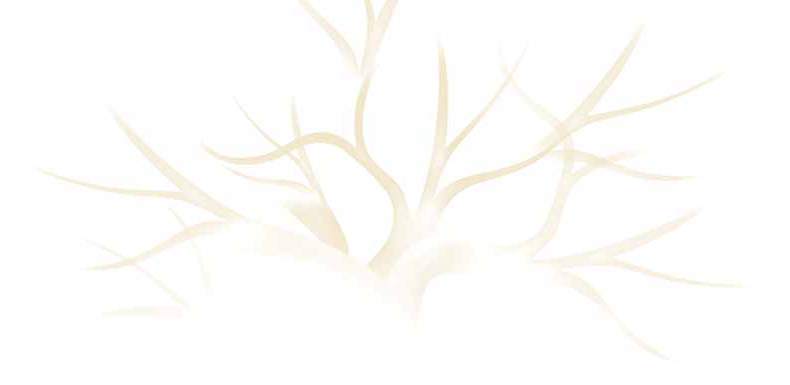
A Host O F I N T E R C O N N E C T I O N S
The heart is purest theater…throbbing in its cage palpably as any nightingale.
RICHARD SELZER, MD, AMERICAN SURGEON AND AUTHOR
It is scarcely as big as the palm of your hand yet it Scientists called gerontologists, who study aging,
sustains life, pumping up to 5 quarts or more of
are seeking to answer these and other questions.
blood per minute to the body’s organs, tissues,
As a result of this probing, some old ideas about
and cells. In a typical day, it beats 100,000 times.
the aging cardiovascular system are giving way to
And in a lifetime, it beats more than 2.5 billion
new theories. In other cases, gerontologists are just times. Even as you rest, your heart is working
beginning to explore some questions, and the heart
twice as hard as your leg muscles would if you
and arteries are yielding their secrets grudgingly.
were running at full speed.
But to truly understand what is emerging and what
Little wonder then that from earliest mythology to
remains mysterious, we’ll need to start where these
modern medicine, the heart has fascinated and
gerontologists began: in the normal, healthy heart.
perplexed us. Fortunately, today we know far
more about the heart and the blood vessels than
The Intricate Pump
was known even a decade ago. Yet for all scientists
The heart is a marvel of coordination and timing.
have learned, there is still much more to unravel.
Almost completely composed of muscle called
Investigators, for instance, now know that the car-
myocardium, it is well-equipped for its life-long
diovascular system undergoes significant changes
marathon of ceaseless beating. It is essentially two
as we age, and the heart and arteries that we are
pumps in one. The right side pumps blood to the
born with are surprisingly different in later life.
lungs to load up on oxygen and dispose of carbon
But how and why do these changes occur? What
dioxide. The left side pumps oxygen-rich blood to
influence do these changes have on our risk of
the body.
developing heart disease and other cardiovascular
To accomplish these tasks, the heart depends on a
disorders as we get older? Are there any underlying
precise sequence of contractions involving its two
signs—even in people who appear to have healthy
upper chambers—the right and left atria—and its
hearts—that precede and predict who will develop
two lower ones, the right and left ventricles.
severe cardiovascular disease and who won’t?
Between these chambers are two valves, each with
4
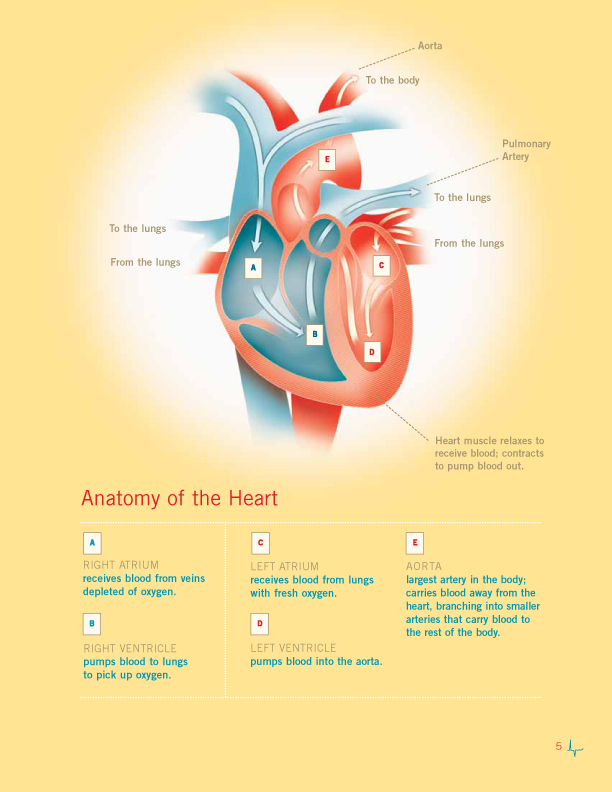
two or three flaps, also known as cusps. The tricus-
quarter of a second. As they travel, the impulses
pid valve separates the right atrium and the right
are relayed through switching stations at precise
ventricle. Its counterpart, separating the left atrium intervals, eventually causing millions of interlocked and the left ventricle, is called the mitral valve. The cells to contract in near unison.
pulmonic valve controls blood flow out of the right
ventricle to the lungs where it picks up oxygen. The
Age, Change, and Adaptation
aortic valve controls the flow of oxygenated blood
The major sequences in this ever-moving picture
out of the left ventricle into the body. Normally
of the heart beat have been known for nearly 400
these valves let blood flow in just one direction.
years. But gerontologists are uncovering another
The heart beats in two synchronized stages. First,
influence on this chain of events—age—and the
the right and left atria contract at the same time
picture appears to be even more complex. Aging,
pumping blood into the right and left ventricles.
it turns out, brings not a simple slowing down of
Then the mitral and tricuspid valves close. A
heart function, as one might expect, but a set of
intricate alterations: a slowing here, an enhance-
split second later, the ventricles contract (beat)
ment there, a minor adjustment elsewhere. The
simultaneously to pump blood out of the heart.
result of these numerous small alterations is adap-
Together, these coordinated contractions produce
tation. In various ingenious, important ways, the
the familiar “lub-dub” sound of a heart beat—
heart at age 65 has adapted to meet the needs of
slightly faster than once a second. After contracting, the 65-year-old body.
the heart muscles momentarily relax, allowing
blood to refill the heart.
However, these refinements have a downside. In
recent years, gerontologists have learned that
To picture how this all works, imagine that as the
some changes in the structure and function of the
heart relaxes dark red blood returning from the
aging cardiovascular system, even in a healthy
body flows into the right atrium. This blood carries
older person without any diagnosed medical con-
little oxygen and is laden with carbon dioxide,
dition, can actually greatly increase the risk of
which is produced by body tissues. When the right
developing cardiovascular diseases, including high
atrium contracts, it propels oxygen-poor blood
blood pressure, atherosclerosis, and heart failure.
through the tricuspid valve into the right ventricle.
In fact, these changes can create the nearly perfect
In turn, the right ventricle pumps blood into the
setting for the onset of severe cardiovascular dis-
pulmonary artery. From there, it flows into the
ease in some healthy older people.
lungs where it picks up oxygen and returns to the
left atrium. When it contracts, the left atrium
Gerontologists seeking to reconcile these two
pumps the now bright red oxygenated blood
conflicting pictures of cardiovascular aging are
through the mitral valve into the left ventricle,
intensely studying the fundamental underpin-
which pumps it into the aorta, from which it is
nings of the age-associated changes in the heart
distributed to other arteries to nourish your cells,
and arteries in hopes of discovering new ways to
tissues, and organs. Then the cycle begins again.
effectively prevent and treat cardiovascular disease
in older people. This quest—from the impact of
This cardiac cycle is regulated by nerve impulses,
the smallest molecule to the influence of diet and
generated by the heart’s internal pacemaker called
exercise—is radically changing how scientists
the sinoatrial node (SA node), a small bundle of
think about the cardiovascular system.
specialized cells located in the right atrium. These
impulses cause the heart to beat. Once generated by
The notion, for instance, that heart cells can’t
the SA node, the impulses spread in a coordinated
replicate themselves is being reconsidered.
fashion across the heart muscle in less than a
Gerontologists now know far more about how
6

aging affects blood vessels and how this process
The modern era of heart research has also
influences the development of atherosclerosis.
depended heavily on the development of powerful,
They are learning much more about how
non-invasive technologies, such as echocardiogra-
physical activity, diet, and other lifestyle factors
phy, magnetic resonance imaging, and radionuclide
influence the “rate of aging” in the healthy older
imaging, which have allowed investigators to easily
heart and arteries.
see valves, walls, and chambers of the heart and
the flow of blood through these chambers. Two
In the Beginning
techniques, thallium scintigraphy, a highly sensitive radionuclide stress test that can detect hidden
Untangling the effects of age from those of disease
coronary artery disease, and stress electrocardio-
and lifestyle is a theme that appears again and
gram (ECG), a measurement of the electrical
again in modern studies of aging. It wasn’t always
activity of the heart, are particularly useful. In
so. In the 1940s and 50s, clinical gerontologists
combination, these two tests allow researchers to
had to conduct most of their studies in chronic
differentiate between the effects of age and the
care hospitals or nursing homes. The people they
effects of coronary disease that is so prevalent
studied lived sedentary lives, and many may have
among older people—effects that were once
had undetected heart disease or other illnesses.
entangled and indistinguishable.
From this perspective, it appeared as if virtually
all bodily functions, including the cardiovascular
The Next Steps
system, deteriorated markedly with age.
As you explore this booklet, you will find that sci-
Then, in 1958, the National Institutes of Health
entists have learned a tremendous amount about
(NIH) launched the Baltimore Longitudinal Study
aging. Today, more than ever, they understand
of Aging (BLSA). This ongoing investigation, now
what causes your blood vessels and heart to age
part of the National Institute on Aging (NIA), has
and know a lot about how this process interacts
tracked the lives of more than 3,000 people from
with cardiovascular disease-related changes. In
age 20 to 90 and older in an effort to document
addition, they have even pinpointed risk factors
the normal or usual physiological changes that
that increase the odds a person will develop car-
occur in a stable population of people who live in
diovascular disease as well as other illnesses. And
the community rather than institutions. BLSA
while many mysteries of the aging heart and arter-
data have been valuable to scientists searching for
ies remain unsolved, gerontologists have discov-
different ways in which aging, lifestyle, and disease ered much about how to prevent or postpone
affect the heart and blood vessels.
heart disease in later life.
Scientists have been fascinated with the heart for centuries. Left: This 1523 woodcut by Jacopo Berengario da Carpi was sophisticated for its time. Right: Today, researchers use magnetic resonance imaging (MRI) 7
and other high-tech tools to study the living heart.
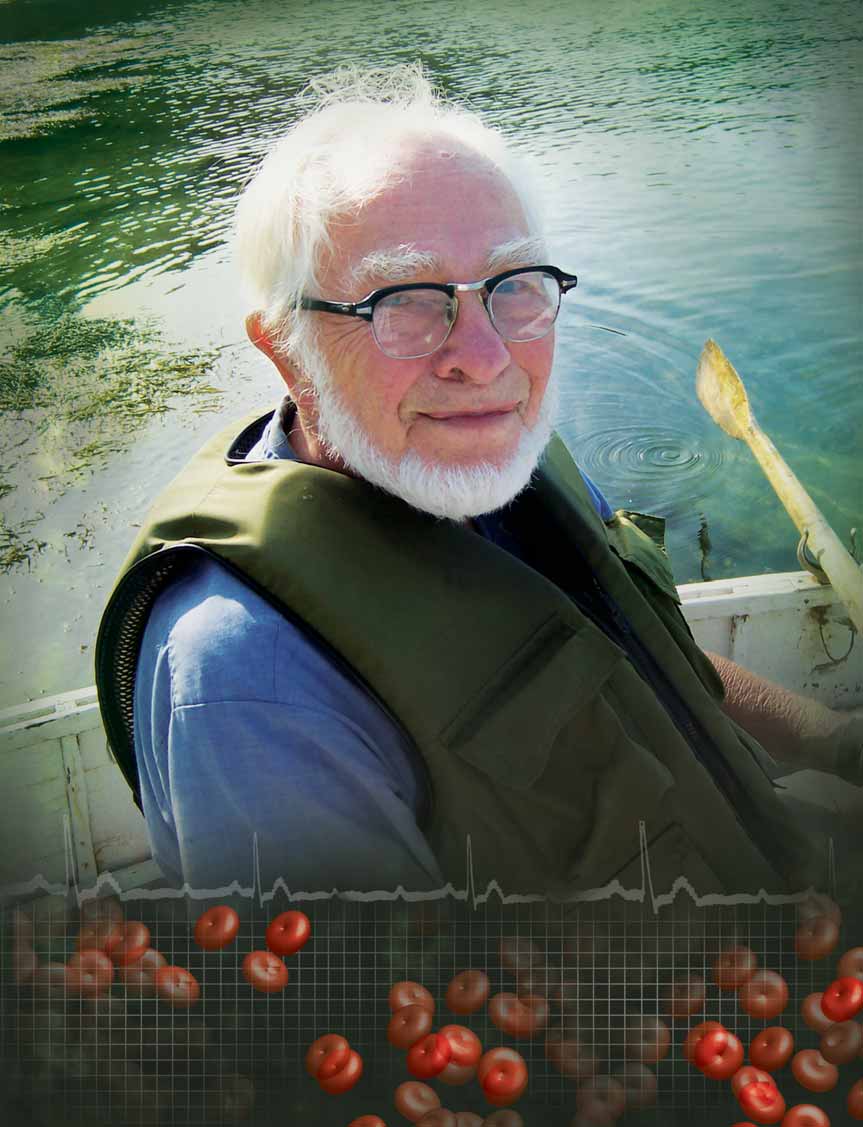

T H E Ag ing H E A RT
The heart is a tough organ: a marvelous mechanism that, mostly without repairs, will give valiant pumping service up to a hundred years.
WILLIS JOHN POTTS, MD, AMERICAN SURGEON, 1895-1968
For 92-year-old John Bicknell, this is the best of
assumption lie intriguing questions that scientists
times. A long-retired English professor, he remains
are just beginning to answer. “We know that older
mentally and physically active. In addition to
people who exercise regularly can do more aerobic
singing in community choirs and performing in
work, meaning they are more physically fit,” says
local musical theater productions, he continues to
Edward Lakatta, MD, who is chief of the
mow his own large yard and often walks up to a
Laboratory of Cardiovascular Science at the NIA.
mile or two a day around his island home in Maine.
“But for decades gerontologists have wanted to
know what changes in the
As he walks around his property, Bicknell some-
aging heart and arteries
times gathers small twigs and branches for kin-
allow this to happen.
dling, and makes a mental note of larger deadfall
Fortunately, in the past few
so he and his son-in-law can return later to cut it
years, we have uncovered
up and haul it back to the house in a truck. An
some remarkable new clues
avid boater, he frequently motors between the
that have clarified how and
island and the mainland. In the summer, he enjoys
why these changes occur.
swimming with his grandchildren in the brisk, but
At the same time, however,
invigorating waters of a nearby cove.
we have detected some
After a recent trip to England and France, he
intriguing evidence that
returned home to a brewing winter storm. The
transforms much of what
next morning, he shoveled 9-inches of snow off
we once thought of as nor-
his deck and front porch.
mal cardiovascular aging.”
John Bicknell
He looks healthy; his muscles are strong; he has no
Many of these adjustments are remarkably effi-
excess fat. And while gerontologists now know
cient, helping the older heart work as well as pos-
that John Bicknell’s 92-year-old heart is not quite
sible. But some ultimately may be detrimental. In
the same as it was when he was 22, it continues to
particular, some gerontologists suspect several of
serve him extraordinarily well.
these age-related changes may lower the heart’s
resistance to disease and compromise its ability
On one level, it’s not surprising that an older
to respond to increased demands for blood and
person who exercises regularly is more physically
oxygen during stress.
fit and better able to care for himself than most
other people his age. But below the surface of that
9
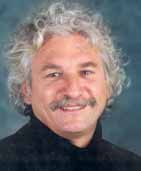
“Fortunately, in the past few years, we have uncovered some remarkable new clues that have clarified how and why these changes occur. At the same time, however, we have detected some intriguing evidence that transforms much of what we once thought of as normal cardiovascular aging.”
EDWARD LAKATTA, MD, CHIEF OF THE LABORATORY OF CARDIOVASCULAR SCIENCE, NIA The Effects of Normal Aging
researchers knew about the older heart mainly
through chest x-rays and autopsy studies of people
The emerging methods of studying the heart have
who were institutionalized, often with chronic
led to the growing realization that the many factors
illnesses. These people’s hearts, which were affected influencing the aging heart and blood vessels are
by disease or extremely sedentary lives, often were
interdependent. At least six major factors affect
smaller than those of younger, healthier people.
how the heart fills with blood and pumps it out.
When scientists first discovered these factors, they
Then, in the late 1950s, gerontologists began to
thought they operated independently. But as
study healthy volunteers, such as those who par-
investigators more closely examined these factors,
ticipate in the BLSA. Soon afterward, scientists
they discovered that these six factors influence
devised new technologies like echocardiography
each other in various direct and indirect ways.
and radionuclide imaging. While x-rays provide a
static, shadowy silhouette, echocardiography and
The diagram on the facing page illustrating their
other imaging techniques clearly show thickness,
interdependence is deceptively simple. It shows only
diameter, volume, and in some cases, shape of the
the six broad categories, but each of these terms
heart and how these change with time during a
encompasses a host of related factors. Many of these
given heart beat. Recently, gerontologists have
factors are the focus of rigorous research, including begun using magnetic resonance imaging (MRI)
structural changes in the normal aging heart.
to get a better look at the aging heart. MRI is a
type of body scan that uses magnets and comput-
Structural Changes
ers to provide high-quality images based on vary-
The NIA’s studies of normal aging have revealed a
ing characteristics of the body’s tissues. The tech-
nology allows physicians to noninvasively study
series of fine-tuned adjustments that allow the
the beating heart’s overall structure and function
heart to meet the needs of the aging body. This
continuously in three dimensions.
picture is radically different from the one that
prevailed several decades ago when marked
The thicker left ventricular walls supplied the first declines in overall heart function were thought to
clue that the heart might be adjusting rather than
be the norm. The revolution in perspective began
simply declining with age. Scientists think that the
in the 1970s when researchers came upon their
increased thickness allows the walls to compen-
first surprise: The walls of the left ventricle, as it sate for the extra stress they bear with age (stress
ages, grow thicker.
imposed by pumping blood into stiffer blood ves-
sels, for instance). When walls thicken, stress is
Up until then, gerontologists thought that the
spread out over a larger area of heart muscle.
heart shrank with age. One reason was that early
10
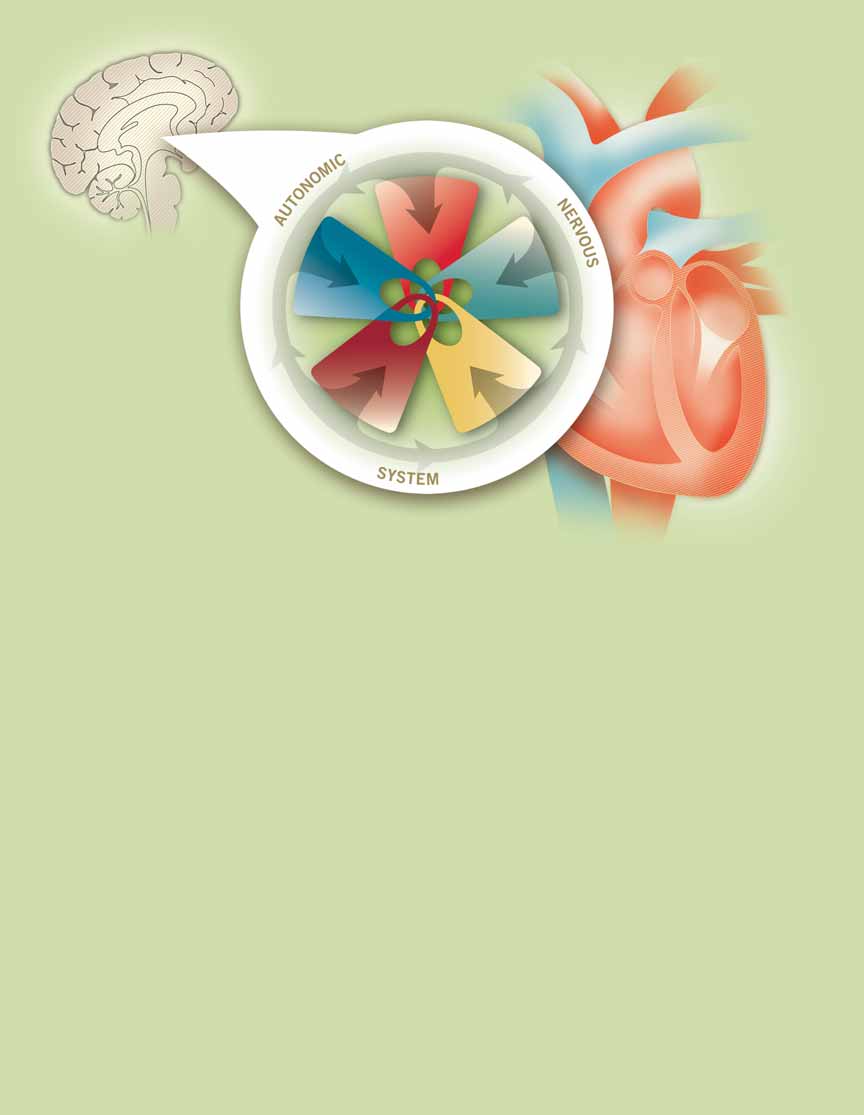
CONTRACTILITY
HEART RATE
PRELOAD
CORONARY
AFTERLOAD
FLOW
Heart Dynamics:
Autonomic Nervous System
Six broad factors determine how much blood the heart pumps per minute (cardiac output).
All six are highly interdependent. The following definitions include just a few examples of their interconnections.
HEART RATE — the number of beats per minute;
AFTERLOAD — the forces that resist contrac-
it affects the amount of blood getting to every
tion once it begins; these forces include resist-
organ in the body. It is regulated by the auto-
ance by the arteries to pulsing and steady blood
nomic nervous system.
flow, which depends partly on the “tightness” or
stiffness of arteries. This tightness depends, in
part, on the contractility of vascular smooth
CONTRACTILITY — the ability of the heart
cells with the arteries.
muscle cells to contract in response to an
increase in calcium in their cytosol.
CORONARY FLOW — the flow of blood through
the coronary arteries to the heart muscle itself.
PRELOAD — stretch on the heart cells prior to
Since the coronary flow determines how much
excitation; it is affected by the amount of blood
oxygen reaches the heart muscle cells, it helps
in the left pumping chamber, or ventricle, before
determine their contractility, which affects all
contraction.
other factors.
AUTONOMIC NERVOUS SYSTEM DISCHARGES NEUROTRANSMITTERS — part of the nervous system that controls involuntary muscles such as the heart; it modulates the other five factors in many ways.
11
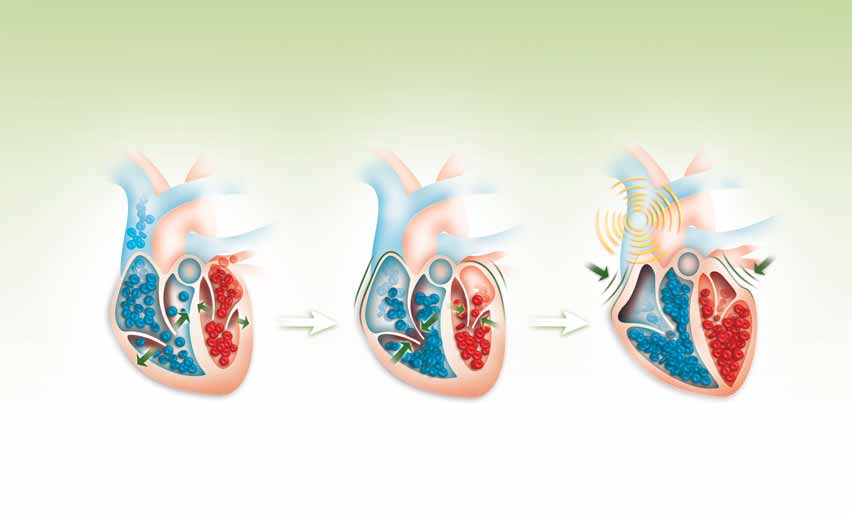
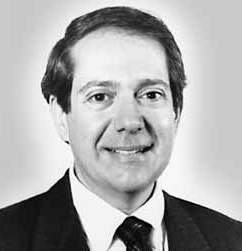
In a Heart Beat
1
2
3
Heart muscle relaxes and
Valves float nearly shut and
Electrical impulse begins in sinoatrial
valves open (early diastole)
ventricles fill with blood
node (the heart’s pacemaker); Atria
contract, adding more blood to
ventricles (late diastole)
Heart Filling
pool of blood and come together to close the pas-
sage. If this valve were closing more slowly in older Other findings about the left side of the heart soon
people, as the echocardiograms indicated, then
followed. While at the NIA, Gary Gerstenblith, MD,
perhaps the ventricle was filling more slowly.
and his colleagues studied the left ventricle and
the left atrium, the receiving chamber into which












